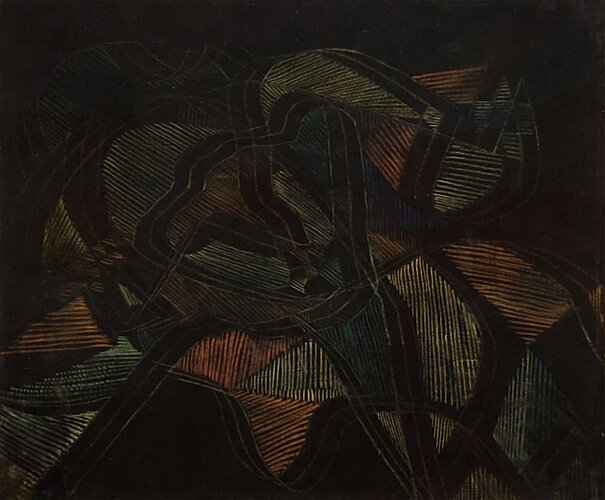MIRKO BASALDELLA
Mirko Basaldella was born in Udine on September 28, 1910, into an artistic family. He studied alongside his brothers Dino (a sculptor) and Afro (a painter) in Venice and Florence. He attended the Institute of Applied Arts in Monza and later spent time with Arturo Martini. At the age of 18, he held his first exhibition in his hometown, together with his brothers. In 1934, he moved to Rome with Afro, where the Galleria della Cometa hosted his first solo exhibition. The following year, he participated in the Venice Biennale as part of the Roman School. In 1937, he visited Paris for the Exposition Universelle, where he was deeply influenced by early 20th-century avant-garde movements like Cubism and, to some extent, Surrealism. His works from 1939 to 1945 showcase a personal synthesis of these influences and the modernism of the time. Among the public commissions he received, the most notable was designing the gates for the Fosse Ardeatine mausoleum in Rome. In the early 1950s, he traveled to the United States with other Italian artists, where the Catherine Viviano Gallery in New York held solo exhibitions for them. In 1955, he was included in the "A New Decade: 22 European Painters and Sculptors" exhibition at the Museum of Modern Art in New York and received the first prize at the São Paulo Biennale. In 1957, he was appointed director of the Design Laboratory at Harvard University in Massachusetts, where he created monumental sculptures for both public and private collections. He spent summers in Italy and took part in group exhibitions. In 1954, he exhibited at the Venice Biennale, where Peggy Guggenheim acquired some of his works for her collection. Throughout his career, he received numerous accolades, including the sculpture prize from the National Academy of Lincei in 1959, election to the Academy of Arts and Sciences in 1962, and the first prize at the Rome Quadriennale in 1966. Mirko passed away in Cambridge, Massachusetts, on September 24, 1969.
→ 01 DEMONIO, 1963, waxy pastel on canvas paper, cm 9,5x15,5


